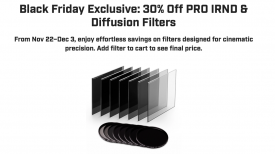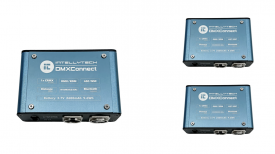By site editor Dan Chung:
Sony A7S SLOG-2 Workflow from Espionage Films on Vimeo.
Since the a7S came out there have been numerous tests and reviews highlighting the camera’s low light and noise performance – especially in the S-Log2 picture profile. Less attention has been paid to the camera’s colour abilities, especially when it comes to reproducing accurate skin tones.
David Carstens has been doing some interesting tests using Davinci Resolve and ImpulZ LUTs from VisionColor. The specific LUT was Kodak 5203 (FC) for S-Log2 (F55) and the results are pretty impressive. . This is what David had to say about how he achieved them:
“When putting my hands on any new camera, there’s one quality I care about most in its feature set – skin tones. It’s what gives any camera personality straight out of the box; the 5D features the Canon “pop”, RED handles them with clinical accuracy, and Alexa has been a big-league favorite thanks to its ability to accurately reproduce them in a faithful yet flattering fashion.
While awaiting the arrival of my a7S (and subsequent variety of lens adapters), I’d read initial reports of high noise levels and green cast when using SLOG2 gamma and S-gamut color settings.
In my own tinkering, I found that SLOG2 does indeed exhibit an alarming noise floor. Perhaps expected when the minimum ISO is an already high 3200? Switching to any one of the other gamma settings offers far cleaner black levels, though at the expense of the massive DR offered with SLOG2.
For my preliminary field test, I wanted to see how well I could achieve a rich, neutral image with minimal fuss. The video is self-explanatory – an overcast day that, while offering soft light for my subject, would ordinarily cause me to fight a blown out cloud layer in the background. My intention was to meter skin at +2 EV using the camera’s spot meter, yet avoid highlights hitting 100% with the zebras. Feeding the sensor extra light goes a long way to mitigate the noise levels, and leaving room to grade back down yields an even cleaner image. Of course, how this strategy would affect skin tones was my primary concern.
My experience with most DSLR level cameras is that the red channel will clip quite easily, likely due to it being boosted to give skin tones that popular mojo. Attempting to avoid this with a flat picture profile such as Cinestyle can make it difficult to bring “life” back to those same skin tones in the grade, as 8-bit compression loses the delicate nuances needed to separate them properly.
Seeing the resulting skin tone quality in this test is what particularly pleased me with the a7S. The ImpulZ LUTs from VisionColor certainly made it easier to achieve the naturalistic color separation. My impression is that a7S color rendition compares favorably to its Sony cousin, the F3, though in a far smaller package and much lower price tag. My next test will be a more controlled battery of over/under exposures, picture profiles, and attempts to push their limits in the grade.”





